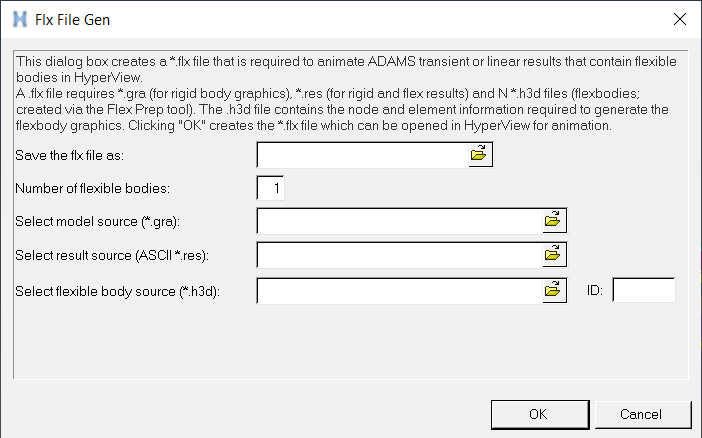Flex File Gen
The Flx File Gen dialog allows you to create an *.flx file, which is required to animate ADAMS transient or linear results that contain flexible bodies in HyperView.

Figure 1. The Flx File Gen dialog
| Save the flx file as: | Enter a name and select a directory to which you want to save the .flx file. | |
| Number of FlexBodies: | Enter the number of flexbodies the file should contain. | |
| Select model source (*.gra): | Select the model source .gra file. | |
| Select result source (ASCII *.res) | Select the result source ASCII .res file. | |
| Select flexible body source (*.h3d): | Select the source .h3d file. | |
| ID: | The ID of the flexbody in the solver input deck. | |
| OK | After making your selections, click OK to create your file. | |
| Cancel | Exit Flx File Gen. | |
An FLX file example:
*ModelSource("sc.gra")
*FlexSource("link.h3d", 1, 1.0), where 1 is the ID of the flexbody in
the ADAMS input file(required for animation). 1.0 is the scale factor of the flexbody.
*FlexSource("link.h3d", 2, 1.0), where 2 is the ID of the flexbody in
the ADAMS input file(required for animation). 1.0 is the scale factor of the flexbody.
*ResultSource("sc.res")
The .flx file is also generated automatically if MotionView pre-processor is used to generate the ADAMS model that contains flexbodies.